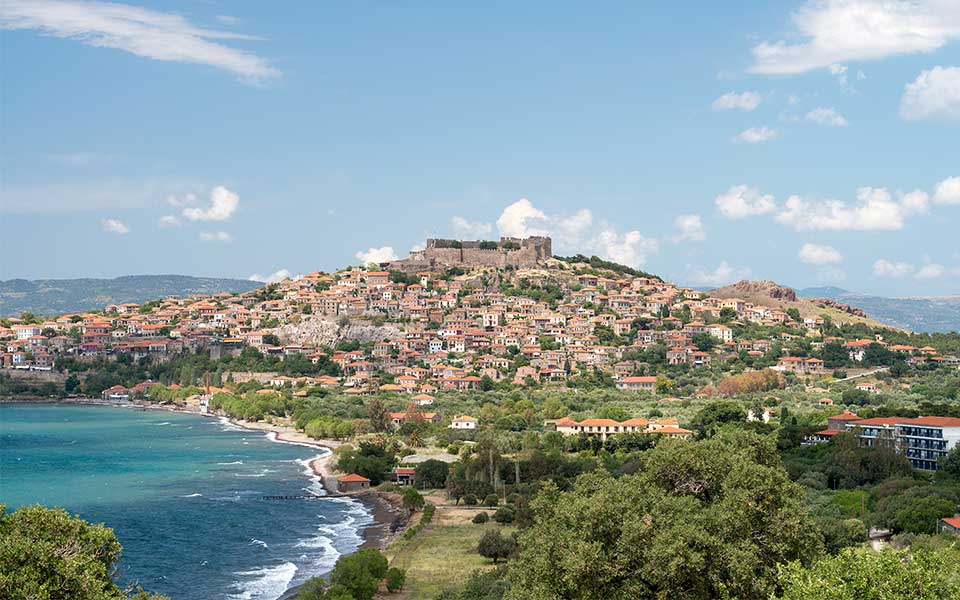The Greek poet Odysseas Elytis described Lesvos as “a plane leaf in the middle of the sea.” He hadn’t found any other place on earth where “the Sun and Moon reign together so harmoniously.”
The great Nobel laureate himself was descended from Lesvos – his father, Panaghiotis Alepoudelis, originally hailed from the seaside town of Panagiouda. Upon landing at the airport in Mytilene, Odysseas Elytis is the first person to welcome visitors to the island, as the airport bears his name.
Driving towards the island’s capital – to clarify a very common misconception: Lesvos is the name of the island, whereas Mytilene is the name of the island’s capital – on the main road, the home of the Alepoudelis family stands out among the other country manors. Located amid thick vegetation, the house is difficult to see, so you have to try to imagine it.
As for the “plane leaf,” Odysseas Elytis wasn’t only referring to the shape of the island. Traveling from one end to the other, you’ll be surprised to find that one half of the island is covered with lush vegetation while the other resembles the surface of the moon, particularly during the summer months, like an imaginary line that divides the island in two. The rocky side of the island is the result of the volcanic activity of Mounts Agra, Anemotia, Vadoussa, Lepetymnos and Mesotopos that shook the area some 18 million years ago, completely reshaping the landscape of the central and western parts of the island.
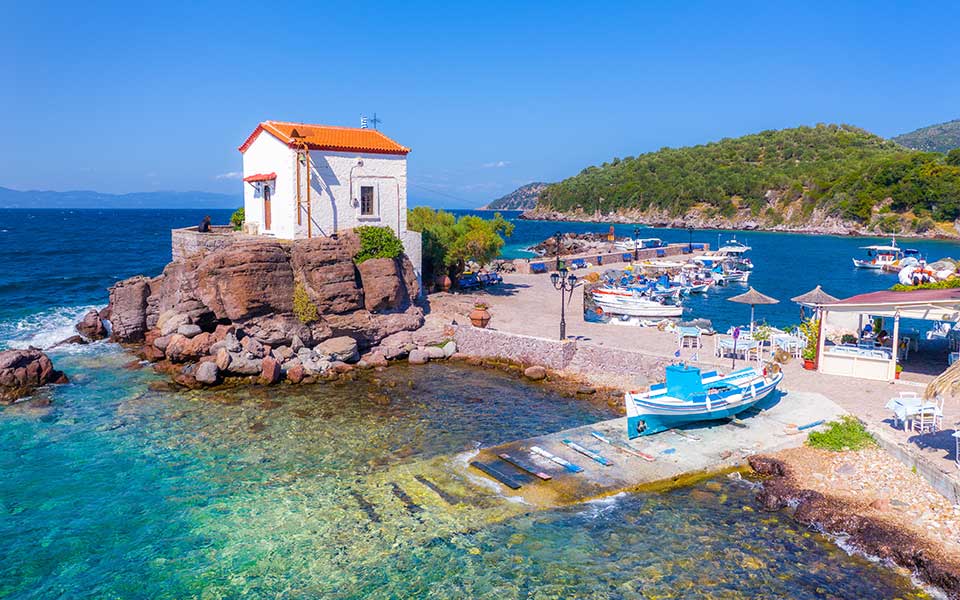
© Shutterstock
The thousand faces of Lesvos
If you’re visiting Lesvos for the first time, you will be in awe of its rich geological heritage. Several diverse types of landscape coexist harmoniously just a short distance from each other. Lesvos is Greece’s third largest island after Crete and Evia, so you’ll need to devote some time to fully explore the entire island.
A good start is the town of Kalloni, the island’s second largest commercial center, located 40km northwest of Mytilene. The area is known for its sardines, which are a staple of the local cuisine, as well as for its wetlands – natural and man-made – and saltmarshes that are home to many species of birds.
One of these species is the flamingo. When we visited the saltmarshes of the Gulf of Kalloni, these beautiful pink birds – as well as many other species that the wetland hosts – performed their perfectly choreographed walk, which we were lucky enough to observe with binoculars from the observation deck. The area attracts global interest, as visitors from all over the world visit Lesvos, including a British birdwatcher who has been visiting the island since 1968.
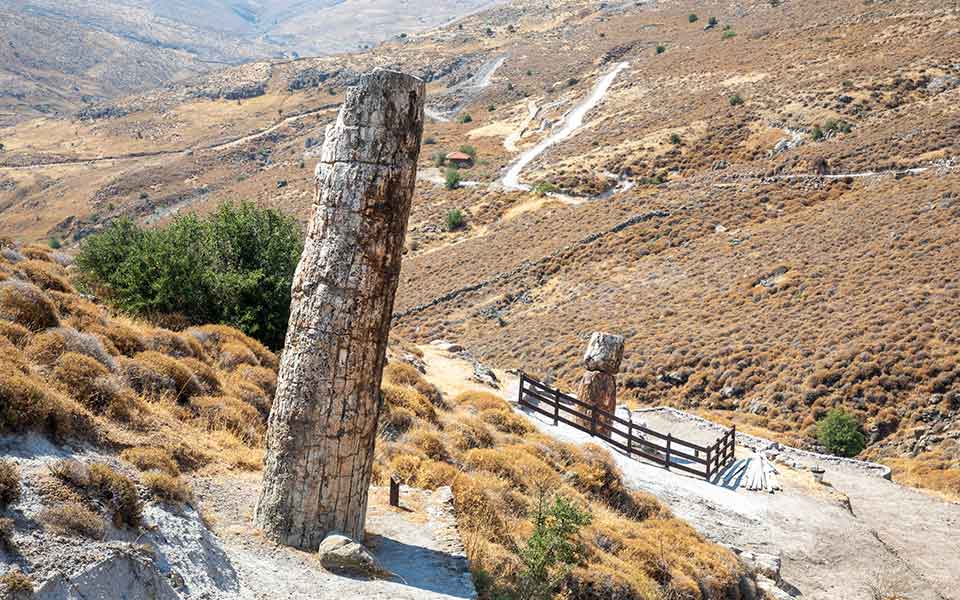
© Shutterstock
The island is renowned for its Petrified Forest, a UNESCO Global Geopark, and one of the two largest petrified forests in the world (the other being in Arizona). You can explore the forest and learn more about it at the Natural History Museum (take the road west towards the town of Sigri). Explore 20 million years of geological history and discover fossils that were formed as a result of the intense volcanic activity that once devastated the area. While exploring the forest, you’ll encounter petrified tree trunks that are still rooted in the ground.
The island is home to some spectacular beaches, like Vatera Beach, which has a length of 8km, and is ideal for families. After a day at the beach, the quiet tavernas of the area invite you to try some of their eclectic dishes.
The most popular beach on Lesvos is at Skala Eresou. Four kilometers in length, it’s the island’s best alternative destination – testified by the sign that designates the point where you can hitchhike if you don’t have any means of making your way down the long road that leads to the beach. In antiquity, Eresos was the place of origin of the Archaic Greek poet Sappho.
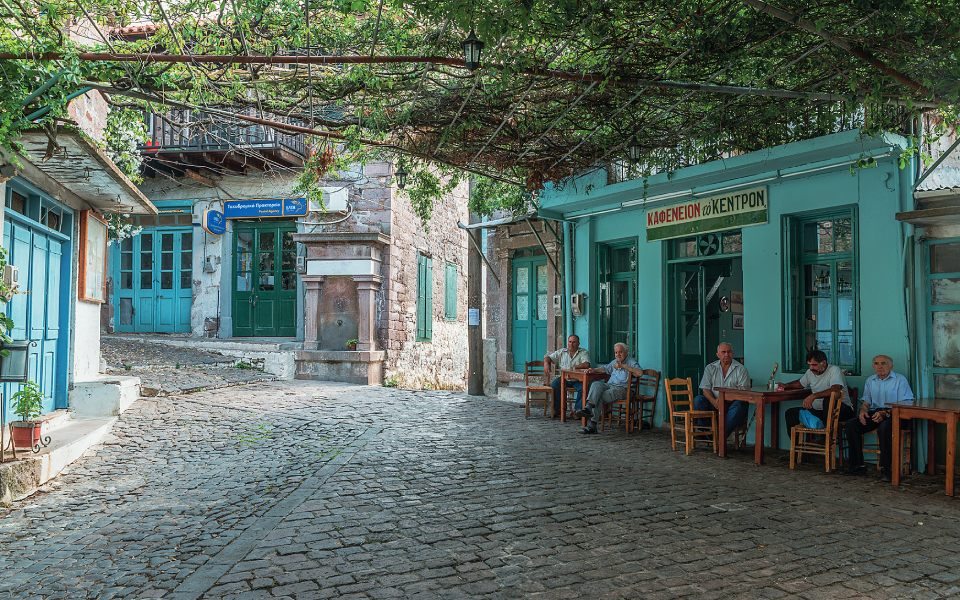
© Perikles Merakos
Agiasos, a destination on its own
The two largest mountains of Lesvos, Mount Lepetymnos in the north, and Mount Olympus in the south, have a difference of only a one meter – one has an elevation of 968m, while the other is 967m – which frequently causes disputes among the locals who claim their mountain is taller.
Halfway up Mount Olympus, at an elevation of 460m, you’ll find one of the island’s most picturesque destinations – the town of Agiasos. The name of this mountainous village dates back to 803 AD, when the priest Agathon returned from a pilgrimage to Jerusalem with some holy relics, including an icon of the Virgin Mary, which today is housed at the Church of the Dormition of the Mother of God. In fact, on August 15 (the Assumption), a big celebration is held in the town, and many of the faithful make their way up to the village on foot. The icon of the Virgin Mary of “Aghia Sion” has been a powerful draw for centuries, the alliteration of which forms the basis of the town’s name “Agiasos.”
A visit to Agiasos is also a journey through time. Locals gather at the town’s central coffee shops to enjoy a cup of coffee and a chat, but you’ll find it difficult to understand what they’re saying as they speak a local dialect. If the weather is cool, you can order a cup of “kainari,” a tea made from a mix of aromatic herbs and spices from Asia Minor.
Among the town’s multicolored houses, stands a building complex that houses the Reading Society of Agiasos, a cultural gem that is run by the town’s inhabitants with a great deal of devotion and care. Apart from its significant library, there is also a room filled with santoors (a trapezoid-shaped hammered dulcimer, with roots in India and the Middle East), a stringed instrument that has had a long tradition in the region. We had the opportunity to listen to an experienced local musician called “Kazino.”
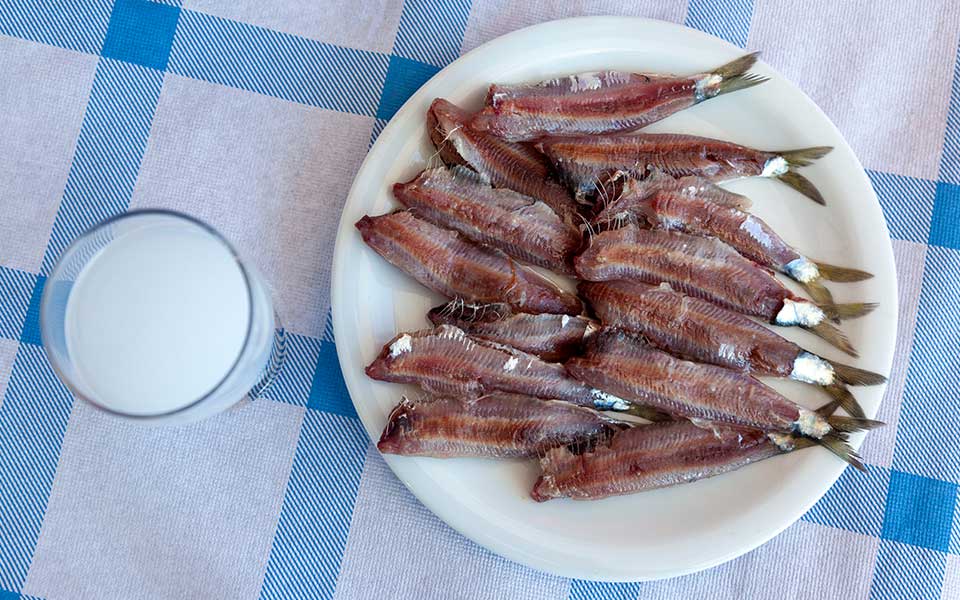
© Shutterstock
A gastronomic paradise
Before leaving Agiasos, don’t forget to try the New Year’s cake. Traditionally prepared for New Year’s Day, in Agiasos they prepare it all year round in their own unique way. The Agiasos New Year’s cake is comprised of 36 layers of filo that are filled with spices and finely grated, salty mizithra cheese. The cake is then baked slowly for three hours, which is how it gets its distinct texture; browned but slightly succulent at the same time.
Wherever you are in Lesvos, the food is exquisite. The fish and seafood are always fresh, and the meat is delicious. Stockbreeding is one of the primary sectors of the island’s economy, which means that you will also find very good cheeses. Try some local ladotyri, feta and graviera cheese with ouzo, or giouzlemedes (gözlemes) – small fried cheese pies that are folded like an envelope and filled with mizithra cheese and a strong mint aroma. These are often served as tasty appetizers.
Another unique local dish is the sougania, stuffed onions filled with minced meat and rice that are “swaddled” by the onion’s layers.
The islanders also know how to make delicious sweets. They make their baclava with almonds, honey from chestnuts, and marmalade from figs. You also have to stop at the Agrotourism Cooperative for Women in Mesotopos to try fresh almond pastries and buy some local products, as well as fresh soap and beauty products.
Finally, you can’t leave Lesvos without trying the ouzo, the island’s trademark drink. To learn more about it, we visited the seaside town of Plomari, home of the famous Plomari Ouzo distillery, where we learned the history of Isidoros Arvanitis whose product can be found on shelves throughout the world. We also took a walk around town, an ideal place for summer walks under the sun.

